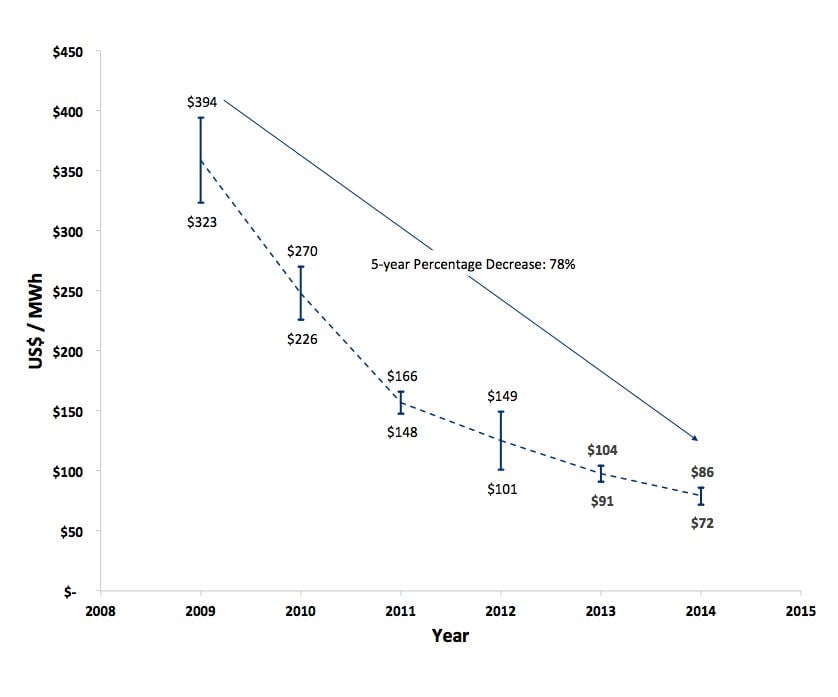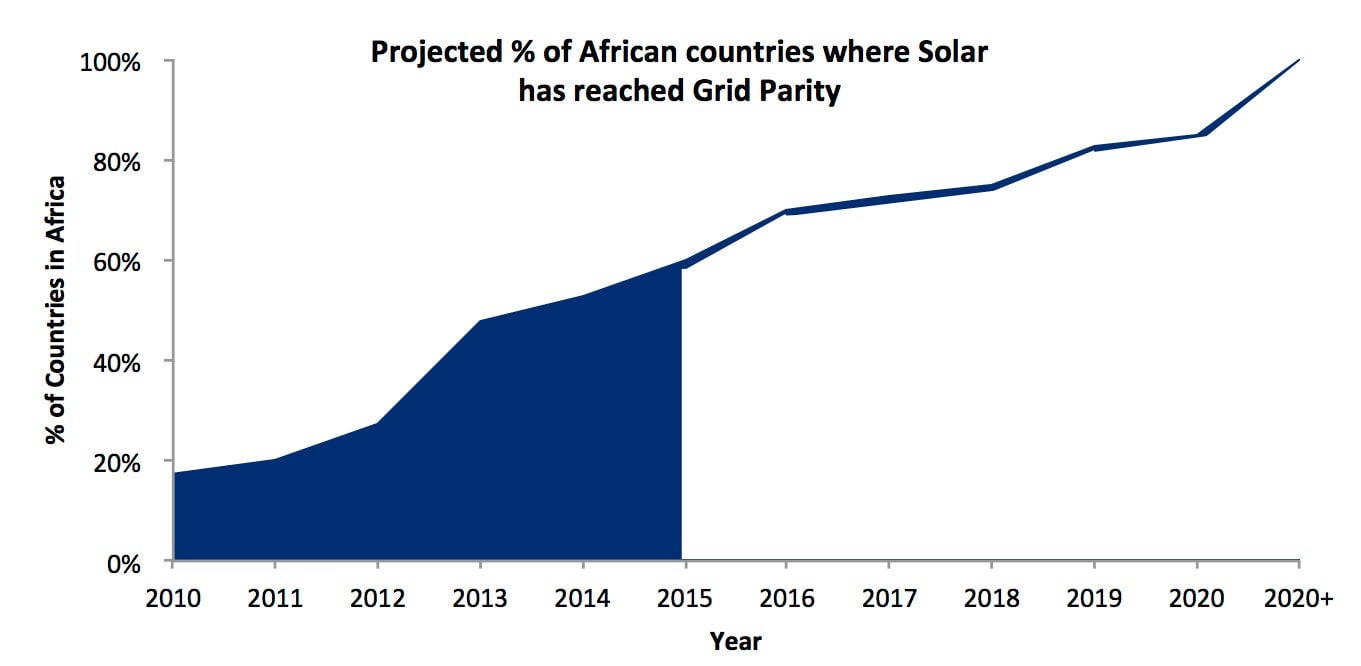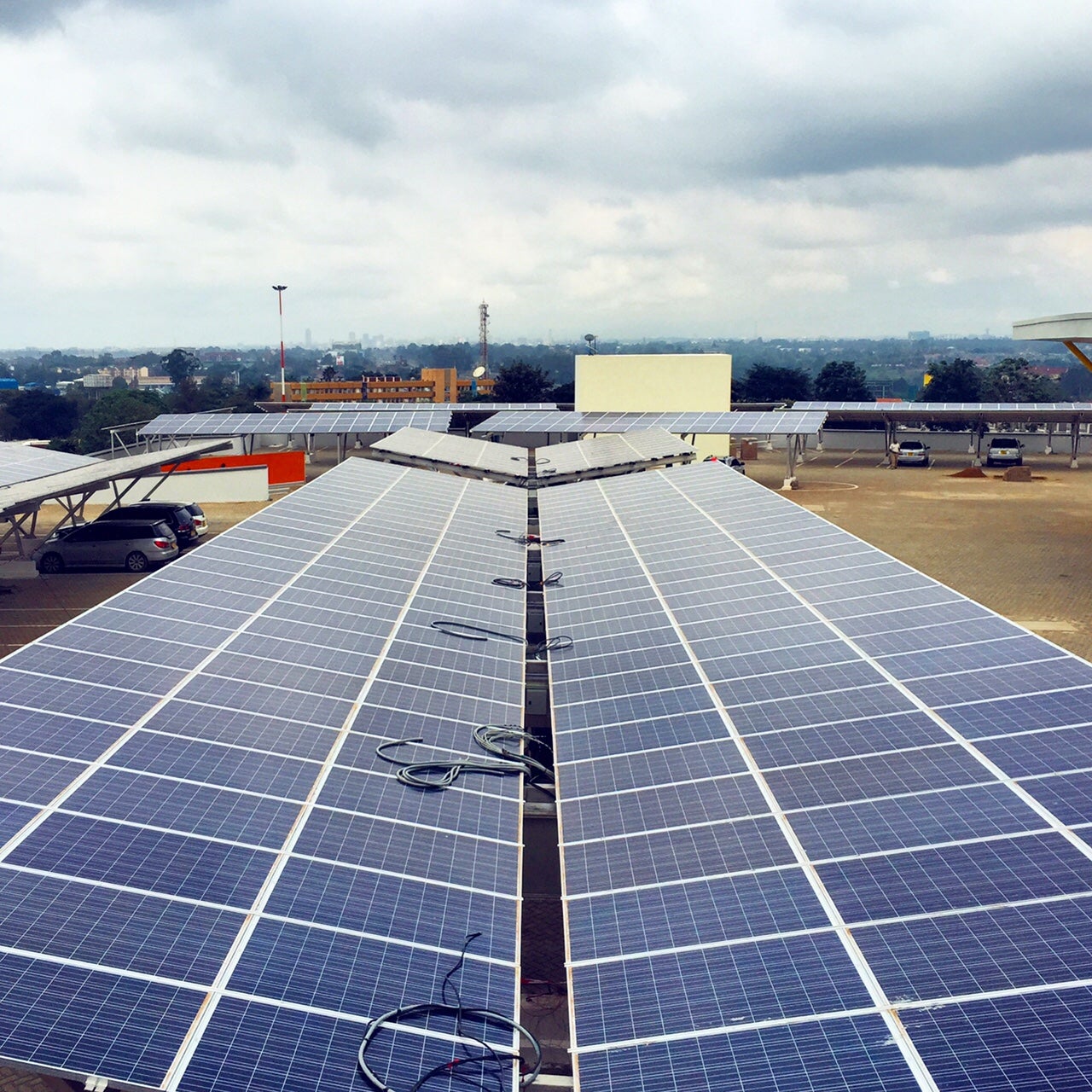Why we’re building an investment fund to back solar energy in Africa
If you find yourself bored at a business conference in Africa, try playing bingo with the words ‘leapfrog’ and ‘telecoms’. The story of how Africa went straight to mobile phones, never building a vast network of copper wire for its telephone infrastructure is told and retold. It is now a cliché in African business. Like most clichés, it is tiresome, but is also instructive. Africa need not follow the same path to growth as other industrialized countries. It can skip long detours into redundant technology and accelerate the pace of growth.


If you find yourself bored at a business conference in Africa, try playing bingo with the words ‘leapfrog’ and ‘telecoms’. The story of how Africa went straight to mobile phones, never building a vast network of copper wire for its telephone infrastructure is told and retold. It is now a cliché in African business. Like most clichés, it is tiresome, but is also instructive. Africa need not follow the same path to growth as other industrialized countries. It can skip long detours into redundant technology and accelerate the pace of growth.
And Africa is growing. In the next two years the World Bank expects Africa’s GDP to rise at an annual rate of around 5%–double the rate of the OECD. The rising African Lion is the new Asian Tiger.
But the Lion lacks energy. Electricity, a fundamental necessity for growth, is expensive and unreliable in Africa. In sub-Saharan Africa today, almost 600 million people remain without electricity. Businesses experience an average of 8 power outages per month, each lasting almost 5 hours. The economic impact of this is severe. Businesses that experience outages lose more than 7% of annual sales as a direct result. To maintain productivity, 48% of businesses are forced to rely on expensive, and dirty, diesel power to supplement their grid supply.
For investors, these challenges also represent opportunities. McKinsey estimates that $835 billion of investment is needed to meet sub-Saharan Africa’s energy needs by 2040.
The near-trillion dollar question is: what kind of power infrastructure should Africa build? Should it replicate the large-scale electricity grids of the developed world, or is there a shorter path to electrifying Africa?
In our view, focusing on traditional electric grids would be like investing only in copper landline telephone networks in Africa in 1995. Instead, investors should help Africa build a cleaner and more distributed electricity infrastructure. The three charts below illustrate why.
Solar is a technology, not a fuel
First, Solar power is a technology not a fuel. Over time, fossil fuels become harder and more expensive to extract. But each incremental advance in solar technology makes it cheaper. In fact the dynamics of solar resemble the microchip industry more than the energy industry. Solar even has it’s own version of Moore’s Law. ‘Swanson’s law’ states that solar modules drop in price by 20% with every doubling of cumulative shipped volume. Just like Moore’s law, this is a transformative force. This chart from Bloomberg New Energy Finance shows the predictive power of the law.

And solar has halved in cost in the last four years
It’s nice to have ‘laws’ and theories but it’s nicer to have facts.According to data from Lazard, the installed price of solar has more than halved in cost in the last four years.

And cheaper solar is beginning to beat the grid across Africa and the world
Solar has now reached grid parity in many developed and emerging markets. On the African continent, with its high irradiation and expensive, unreliable grid power, solar is even better equipped to beat the grid. Analysis by the German solar company Q-Cells has estimated that solar will be at grid parity in more than half of Africa countries by the end of 2015. By 2020, solar is projected to be cheaper than the grid in 85% of Africa.

Even if these numbers prove optimistic, it is clear that the underlying economics of energy are shifting. Empowered by this shift, new business models are emerging. Given the absence of old legacy infrastructure and the prevailing high cost of power, Africa will be a proving ground for these new models of power delivery.
Innovative entrepreneurs are challenging the status quo by offering affordable solar solutions directly to African consumers and businesses. M-KOPA, a provider of pay as you go solar home systems has now connected 200,000 customers across East Africa. Microgrid providers such as Powerhive are successfully operating solar micro-grids in remote villages.
Our company, CrossBoundary Energy is building a dedicated fund for commercial and industrial solar. Through the Solar4Africa platform we finance solar conversions for large commercial and industrial customers so they can purchase power directly from panels on their own roof. Power is no longer a privilege bestowed by the presence of the grid. Now it’s a product. A product to be competed.

This is not the end of the grid. African countries still need centralized generation and transmission. Yet competition from distributed solar means that the supply of electricity is no longer a natural government monopoly. African countries can skip an outdated era of power delivered solely through large-scale generation and transmission lines run by monopoly utilities.
Without the burden of legacy infrastructure, Africa can pioneer new methods of energy delivery. Utilities can focus on providing mass, base load power to major population and commercial centers. Regulators can allow private provision of distributed generation to where demand remains greatest. With the grid and distributed self-generation operating in tandem, powering Africa’s growth becomes an achievable goal. By 2040, Africa could have the smartest, cleanest and most decentralized electricity infrastructure in the world.